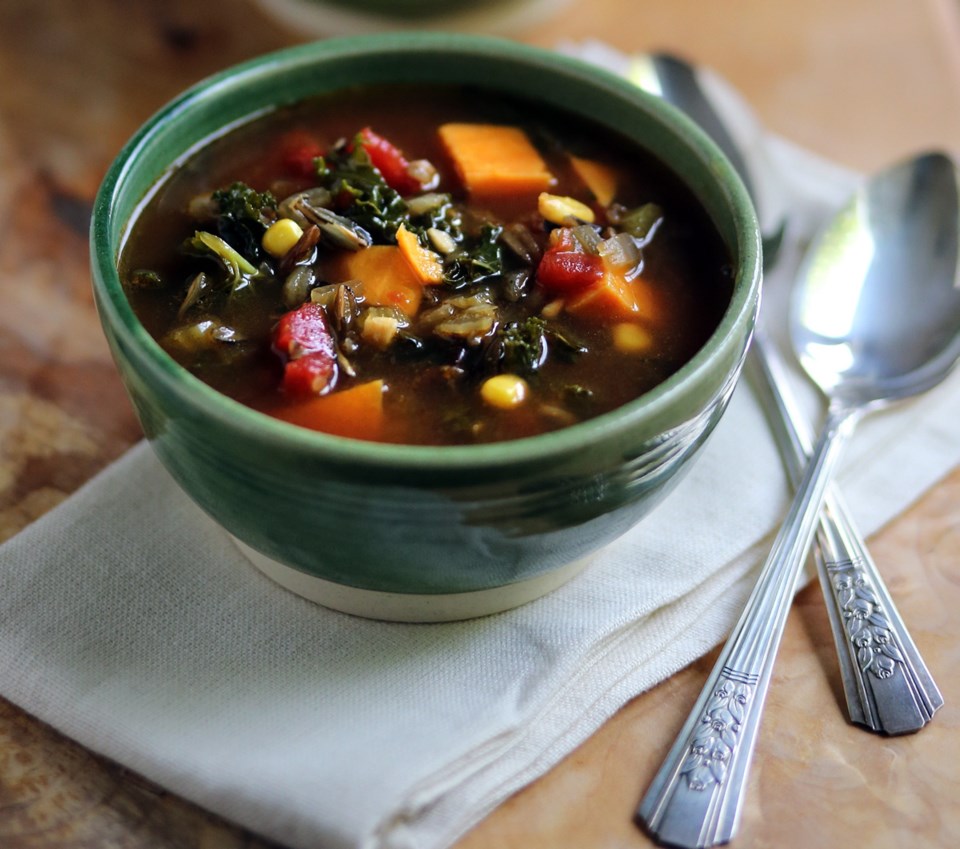 I recently did a road trip that started after I flew to Winnipeg, rented a car, found the Trans-Canada highway and headed east to Thunder Bay to visit family and friends. It was a pretty time of year to make that journey, as the autumn leaves of the deciduous trees were stunningly red and gold and stealing the show from the evergreens.
I recently did a road trip that started after I flew to Winnipeg, rented a car, found the Trans-Canada highway and headed east to Thunder Bay to visit family and friends. It was a pretty time of year to make that journey, as the autumn leaves of the deciduous trees were stunningly red and gold and stealing the show from the evergreens.
When I drove back to Manitoba to return the car I got to see that show again and I knew I was definitely in Canada when light snow starting falling near Kenora. No wonder I saw so many flocks of waterfowl heading south.
I also felt very Canadian the last night I was on the road when eating my supper from Seagulls Restaurant in the small, lakeside town of Gimli, located about an hour north of Winnipeg. Since the restaurant overlooked the source of the fish, I couldn’t resist ordering the pan-fried Lake Winnipeg pickerel fillets served with Manitoba wild rice. The pickerel was delicious and has long been a favourite of mine, but it was the wild rice that intrigued me more. It had been a while since I’d eaten it.
The first thing I find curious about it is that, despite the name wild rice, it’s actually not a type of rice at all. It’s the seed of a tall aquatic grass, the elongated seeds of which resemble rice and are harvested from North American lakes and rivers, including many in Saskatchewan, Manitoba and northwestern Ontario.
After harvesting, the seeds go through a period of curing before they are roasted, removing the moisture from them. A husker then removes the chaff from the seeds and you end up with dark brown- to black-coloured grains called wild rice.
The roasting process gives wild rice a deliciously nutty, slightly smoky flavour. That and its pleasingly chewy texture when cooked make it a very unusual ingredient. It pairs well with foods such as fish, game and berries that are hunted or gathered from near where wild rice grows.
Before cooking wild rice, I always wash it well and drain it. Once in the pot, for every cup of wild rice I want to cook, I’ll add at least four cups of cold water or flavoured liquid. I’ll then bring the wild rice to a simmer and cook it until tender, about 25 to 35 minutes, depending on the size of the grains. When ready, it should not be too firm, a sign it has not cooked, nor soft and mushy, a sign it has simmered too long.
Because wild rice takes longer to cook than white rice, it’s often cooked separately and then added to a dish, which is the case in today’s soup recipe. If you tried to cook it entirely in the soup, the other ingredients — the vegetables — would overcook before the wild rice became tender.
Because wild rice does have a fairly bold flavour, it’s sometimes blended with white or another type of rice to temper that, as I did in today’s rice pilaf recipe.
After cooking, wild rice can be mixed with other ingredients to make dishes such as salads, casseroles and stuffings.
On the nutrition side of things, when eating wild rice you’ll take heart in the fact that it’s highly digestible, is high in fibre, is higher in protein than brown rice, is a source of vitamin B and contains other good things, such as iron and calcium.
Now that I’m back on rainy Vancouver Island, I think I’ll eat wild rice more often. When I do, I’ll remember those golden autumn leaves I saw on my road trip, but I’ll try not to think about that October snow.
Yam, Wild Rice, Kale and Corn Soup
This ultra hearty, perfect-for-autumn soup yields eight servings. If that’s too much for you, once cooled to room temperature, you could freeze the unused portions for another time.
Preparation time: 25 minutes
Cooking time: About 25 minutes
Makes: eight servings
1/2 cup wild rice
2 1/2 cups water
2 Tbsp olive oil
1 small onion, finely chopped
1 small celery rib, finely chopped
1 large garlic clove, minced
7 cups chicken or vegetable stock
1/2 tsp dried thyme
1 medium yam, peeled and cut into 1/2-inch cubes
1 (14 oz.) can diced tomatoes
3 leaves fresh green kale, washed well, tough middle rib trimmed and discarded, leaves coarsely chopped
3/4 cup frozen corn kernels
o salt and freshly ground black pepper to taste
Place the wild rice and water in a small pot. Bring to a simmer and cook rice until tender, about 25 to 30 minutes. Drain the wild rice well and set aside.
Place the oil in a pot set over medium heat. When hot, add the onion, celery and garlic and cook until softened, about 5 to 6 minutes. Add the stock, thyme, yams and tomatoes and bring the soup to a slow simmer. Simmer 5 minutes. Stir in the kale, wild rice and corn and simmer 10 to 15 minutes more, or until the yams and kale are tender. Add more stock if you find the soup too thick. Season the soup with salt and pepper and serve.
Two-Rice Pilaf with Dried Blueberries and Walnuts
Wild and white rice combine in this flavourful side dish dotted with dried blueberries and nuts. Serve it alongside such things as bison, venison, duck, cornish hen, goose, rack of pork or fish.
Preparation time: 15 minutes
Cooking time: About 40 minutes
Makes: six servings
1/2 cup wild rice
2 1/2 cups water
2 Tbsp olive oil
1 small onion, finely diced
3/4 cup long grain white rice
2 1/2 cups chicken stock
1/2 tsp ground sage
1/2 cup dried blueberries (see Note)
1/2 cup walnut pieces
• salt and freshly ground black pepper, to taste
2 Tbsp chopped fresh parley
Place the wild rice and water in a small pot, bring to a simmer and simmer until firm-tender, about 20 minutes. (The rice will be cooked completely tender when added to the pilaf). Drain the wild rice well and set aside.
Heat the oil in a medium pot set over medium heat. Add the onion and cook until tender, about five minutes. Add white rice and cook, stirring, three minutes more.
Mix in the stock, pre-cooked wild rice, sage, blueberries, nuts, salt and pepper. Increase heat to high and bring to a rapid boil. Then cover the rice, reduce the heat to its lowest setting, and cook until the rice is tender, about 15 to 18 minutes. Fluff the rice with a fork, mix in the parsley, and serve.
Note: Dried blueberries are sold at many supermarkets, in the bagged, dried fruit aisle, or in the bulk foods department.
Eric Akis is the author of the hardcover book Everyone Can Cook Everything. His columns appear in the Life section Wednesday and Sunday.
eakis@timescolonist.com



